Southern cuisine has a rich heritage that brings families together around dinner tables across the region. But not every Southern delicacy wins universal praise – some dishes create fierce debate between devoted fans and disgusted critics. From pig parts to gelatinous concoctions, these foods represent tradition to some and culinary nightmares to others. Ready to discover which Southern classics draw the strongest battle lines?
1. Chitlins (Chitterlings)
The mere mention of chitlins sends some folks running while others start planning a feast. These cleaned, boiled pig intestines represent soul food royalty despite their notorious cooking aroma that can clear a house faster than a fire alarm.
Preparation requires meticulous cleaning to remove impurities – a labor of love that can take hours. The resulting dish offers a chewy texture and distinct flavor that devotees describe as earthy and satisfying.
Historically, chitlins emerged from plantation cooking where enslaved people made use of discarded animal parts. Today, they remain a holiday tradition in many Southern households, though younger generations increasingly pass on this particular culinary inheritance.
2. Fried Frog Legs
“Tastes like chicken” might be the most common description, but that doesn’t convince everyone to try these amphibian delicacies. Breaded and deep-fried to golden perfection, frog legs appear on Southern tables particularly in Louisiana and parts of the Mississippi Delta.
The meat has a surprisingly delicate flavor with a texture similar to chicken wings but slightly more tender. Typically seasoned with Cajun spices and served with remoulade or hot sauce, they’re a backwater delicacy with surprising international parallels.
French settlers likely introduced this dish to Louisiana, creating a culinary bridge between European cuisine and Southern cooking. Modern sustainability concerns have made wild-caught frog legs less common, though farm-raised alternatives maintain the tradition.
3. Pickled Pig’s Feet
Found in jars at country stores and on grandmothers’ tables across the South, pickled pig’s feet spark immediate reactions. The pink, vinegar-preserved trotters develop a tangy flavor and jelly-like texture around small bones that devoted fans find irresistible.
Eating them requires a certain technique – pick them up, nibble around the bones, and savor the gelatinous meat. The vinegar brine, often enhanced with spices like bay leaves and peppercorns, creates a distinctive taste that’s simultaneously sour, salty, and porky.
Once a practical preservation method in pre-refrigeration days, pickled pig’s feet now represent cultural continuity rather than necessity. They’re particularly popular in rural communities and among older Southerners who grew up with this polarizing snack.
4. Deviled Eggs
No Southern gathering feels complete without a tray of deviled eggs, yet these picnic staples divide opinion like few other foods. The sulfurous aroma alone sends some guests strategically positioning themselves at the opposite end of the buffet table.
Creating the perfect deviled egg involves boiling eggs just right, then mixing the yolks with mayonnaise, mustard, and secret family ingredients. Regional variations might include sweet pickle relish, paprika, or even a dash of hot sauce for kick.
The fancy egg plates specifically designed for serving these treats reveal their cultural importance across the South. While texture critics object to the creamy filling and rubbery whites, deviled egg enthusiasts argue passionately about proper preparation – should they be sprinkled with paprika or crowned with a slice of olive?
5. Grits
Yankees scratching their heads over a bowl of grits is practically a Southern comedy trope. These ground corn kernels cooked to creamy perfection inspire fierce loyalty among Southerners while confounding visitors with their seemingly bland appearance.
The controversy often centers around preparation style – sweet or savory? Purists insist proper grits need only salt, pepper, and butter, while others transform them with cheese, shrimp, or even sugar and fruit. Texture presents another battleground, with preferences ranging from soupy to firm enough to eat with a fork.
Native Americans introduced grits to early settlers, creating a dish that would become a cornerstone of Southern breakfast tables. Restaurant menus across the South proudly feature variations like shrimp and grits, though many establishments struggle to match grandmother’s perfectly seasoned version.
6. Pimento Cheese
“Southern caviar” creates instant nostalgia for some and wrinkled noses for others. This simple spread combines grated cheddar, mayonnaise, and diced pimentos into a distinctively orange mixture that appears at church socials and family gatherings throughout the region.
The texture causes much of the controversy – creamy yet studded with cheese shreds and pepper bits. Recipes vary dramatically between families, with fierce debates about proper ingredients; should it include cream cheese? Is Duke’s the only acceptable mayonnaise? Are additional spices sacrilege?
Pimento cheese sandwiches remain a Masters Tournament tradition, elevating this humble spread to prestigious status. Modern chefs have reimagined the classic by incorporating it into burgers, grits, and even upscale appetizers, much to the dismay of traditionalists who prefer it simply slathered between white bread slices.
7. Collard Greens
The aroma of collards cooking for hours fills Southern kitchens with a distinctive smell that signals comfort to some and triggers windows being thrown open by others. These large, leafy greens transform through slow cooking with pork fat into a tender side dish with pot liquor worth sopping up with cornbread.
Cooking technique divides households – how long should they simmer? Is a ham hock necessary, or will bacon suffice? Should vinegar or hot sauce be added at the table? The bitter notes that remain after cooking create the primary division between fans and critics.
Collards connect directly to African culinary traditions brought to America during slavery. Rich in nutrients yet inexpensive, they became survival food that evolved into cultural touchstones. New Year’s Day tables across the South feature collards prominently, promising financial prosperity in the coming year to those who partake.
8. Hog Head Cheese
Despite its name, this Southern delicacy contains no dairy whatsoever – just parts of a pig’s head suspended in natural gelatin. The misnomer causes initial confusion, but the actual composition prompts even stronger reactions from the uninitiated.
Creating this traditional cold cut involves boiling a pig’s head until the meat falls off and the natural collagen forms a jelly-like binding. Seasoned with onions, bell peppers, and spices, the mixture gets pressed into loaves that can be sliced for sandwiches or eaten alone.
Louisiana and other Gulf states particularly embrace this dish, which shares similarities with European headcheese varieties. The texture presents the greatest challenge for newcomers – simultaneously meaty and jiggly, with unexpected bits of cartilage occasionally surprising the eater. Devotees praise its rich flavor and connection to waste-not-want-not culinary traditions.
9. Catfish (Especially Fried)
Bottom-feeders turned delicacy, catfish divide Southern diners between those who consider Friday fish fries sacred and others who can’t get past the whiskers. Cornmeal-crusted and deep-fried until golden, catfish fillets appear on restaurant menus and family tables throughout the region.
The controversy stems partly from catfish’s natural habitat and diet, which can impart what critics describe as a “muddy” flavor. Farm-raised varieties address this concern somewhat, though purists argue they lack the character of their wild-caught cousins. Proper preparation requires soaking in buttermilk or seasoned milk to neutralize any unpleasant tastes.
Catfish farming transformed the Mississippi Delta economy, creating a sustainable industry from a once-seasonal catch. The classic presentation includes hushpuppies and coleslaw, with debates raging about appropriate condiments – tartar sauce, hot sauce, or simply lemon?
10. Livermush
North Carolina’s beloved breakfast meat remains virtually unknown outside the Carolinas, and many visitors prefer to keep it that way. This firm loaf combines pig liver, head parts, and cornmeal into a distinctively flavored product that gets sliced and fried until crispy.
The name does this regional specialty no favors in winning new converts. Even the appearance – a grayish-brown block with visible specks – requires getting past visual prejudice before tasting. Devotees insist it must be sliced thin and fried crisp, then served with eggs or on a sandwich with mustard.
German settlers likely influenced the development of livermush, creating an affordable protein source that maximized available ingredients. Annual festivals celebrate this polarizing food in towns like Marion and Shelby, North Carolina, where locals embrace their unique culinary heritage while visitors cautiously sample small bites.
11. Souse
Souse takes the concept of head cheese and adds a tangy twist through pickling, creating a cold cut that showcases resourcefulness and flavor-preservation techniques. This gelatinous meat product incorporates various parts from a pig’s head suspended in vinegar-infused aspic.
The texture combines chewy meat bits with a firm yet wobbly gelatin base. Flavorings typically include onions, hot peppers, and pickling spices that cut through the richness of the meat. The acidic component distinguishes souse from regular head cheese, adding brightness to the fatty components.
Caribbean influences shaped Southern souse traditions, particularly in coastal communities where preservation methods proved crucial. Modern refrigeration has made such preservation techniques unnecessary, yet souse endures as a cultural touchstone. Sliced thin on crackers or bread, it remains a treasured treat for those raised with it and a textural challenge for newcomers.
12. Sorghum Syrup
Golden-amber and flowing with the thickness of molasses, sorghum syrup creates instant childhood memories for rural Southerners. This sweetener extracted from sorghum cane stalks offers a complex flavor profile that some compare to an earthier, tangier version of honey.
Production involves harvesting sorghum cane, pressing the juice, then boiling it down in large kettles until it reaches the proper consistency. The resulting syrup carries mineral notes and a distinctive aftertaste that divides opinion sharply – advocates praise its depth while critics find it overwhelming compared to maple syrup or honey.
Fall sorghum-making gatherings once marked community harvests across Appalachia and the upper South. The traditional serving method involves pouring the syrup onto a plate, adding butter, then sopping it up with biscuits. Modern chefs have rediscovered sorghum as an authentic Southern ingredient, incorporating it into cocktails and glazes.
13. Boiled Peanuts
Roadside stands across the South offer this peculiar treat that confounds visitors expecting crunchy nuts. Green peanuts simmered for hours in salty brine develop a soft, bean-like texture that devoted fans crave and uninitiated tasters often reject immediately.
The preparation seems deceptively simple – just peanuts, water, and salt – though variations might include Cajun seasoning or ham hocks for extra flavor. The consumption technique requires practice: crack the softened shell, slurp the briny liquid, then extract and eat the peanut while discarding the shell.
South Carolina officially designated boiled peanuts as the state snack food, recognizing their cultural significance. Originally a preservation method for raw peanuts before modern storage, they evolved into a beloved tradition. Gas station crock pots keep this legacy alive, filling the air with their distinctive aroma and creating a dividing line between Southern natives and puzzled visitors.
14. Chicken Gizzards
Hidden gems or offal nightmares? Chicken gizzards represent the ultimate divide in Southern meat preferences. These small, muscle-dense organs from a chicken’s digestive tract transform through slow cooking and frying into intensely flavored, chewy morsels.
Preparation typically involves parboiling to tenderize the naturally tough muscle before breading and frying. The resulting texture remains distinctively chewy – admirers call it satisfyingly toothsome while critics find it unpleasantly rubbery. The flavor concentrates the essence of dark chicken meat with mineral undertones.
Many Southern gas stations and takeout spots offer gizzards alongside livers as affordable protein options. Rural Southern children often grew up competing for these treats when a chicken was processed for Sunday dinner. Though less commonly served in homes today, they maintain a devoted following in soul food establishments and country cooking restaurants.
15. Tomato Aspic
The crown jewel of contentious Southern ladies’ luncheons, tomato aspic combines savory tomato flavor with the wobbly texture of gelatin. This retro dish appears at summer gatherings and holiday tables, causing immediate division between those who appreciate its refreshing qualities and others repulsed by its jiggling presentation.
Creating the perfect aspic requires balancing acidity and gelatin to achieve the right firmness. Traditional recipes incorporate tomato juice, lemon, Worcestershire sauce, and occasionally celery or other vegetables suspended in the ruby-red gelatin. Served on lettuce leaves and often topped with mayonnaise, it represents mid-century Southern refinement.
Church cookbooks across the South contain numerous aspic variations, testament to its historical popularity. Though younger generations typically reject this dish outright, it maintains devoted defenders among older Southerners who associate it with proper entertaining and ladies’ social gatherings.
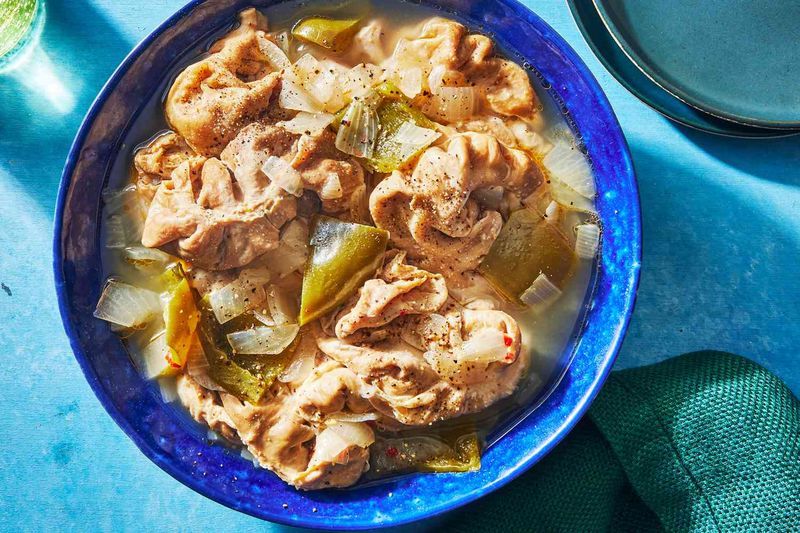
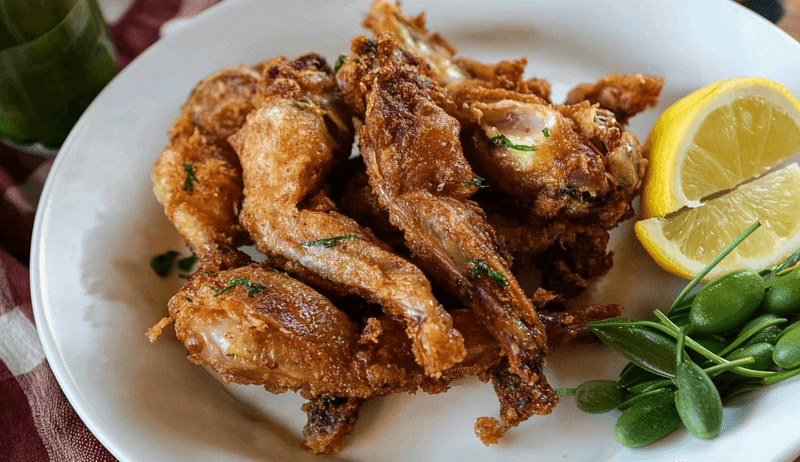
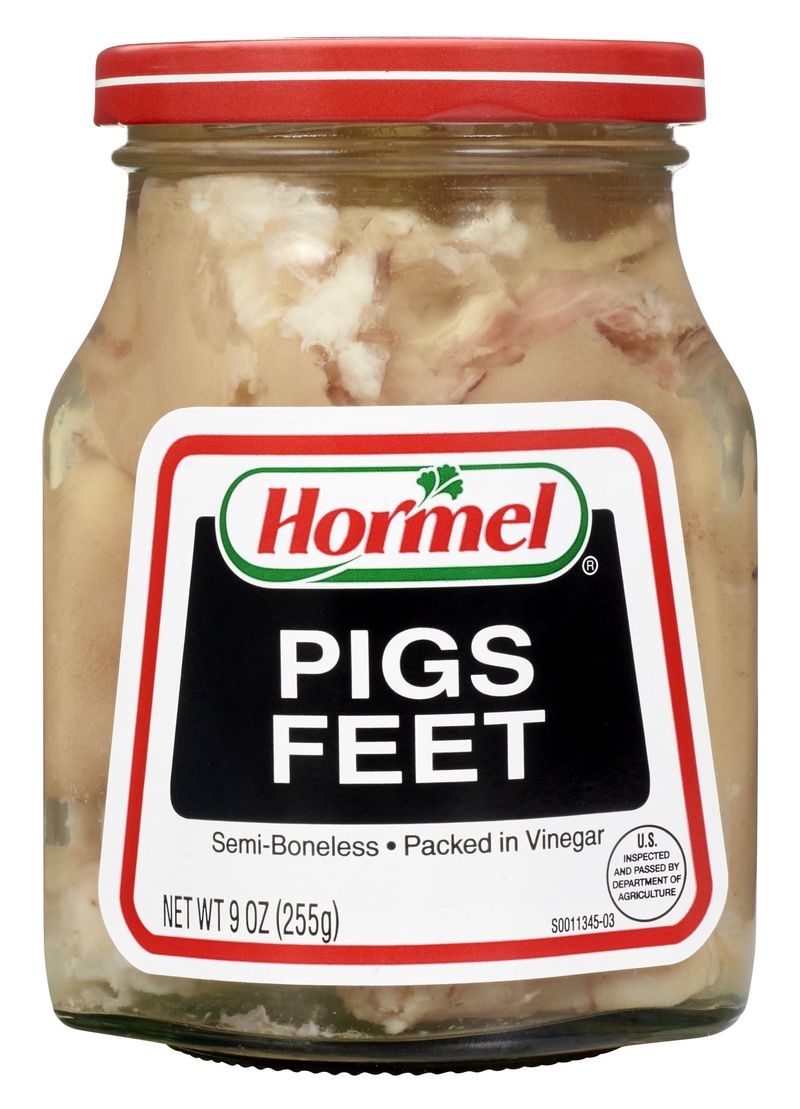
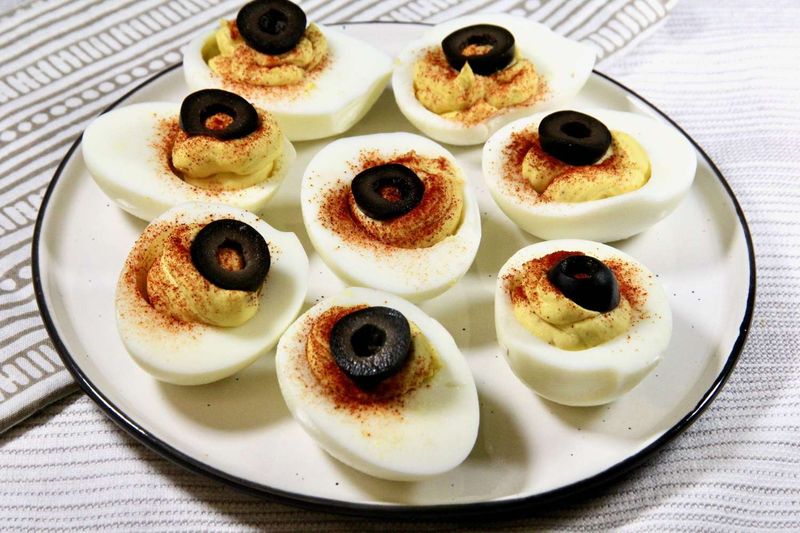
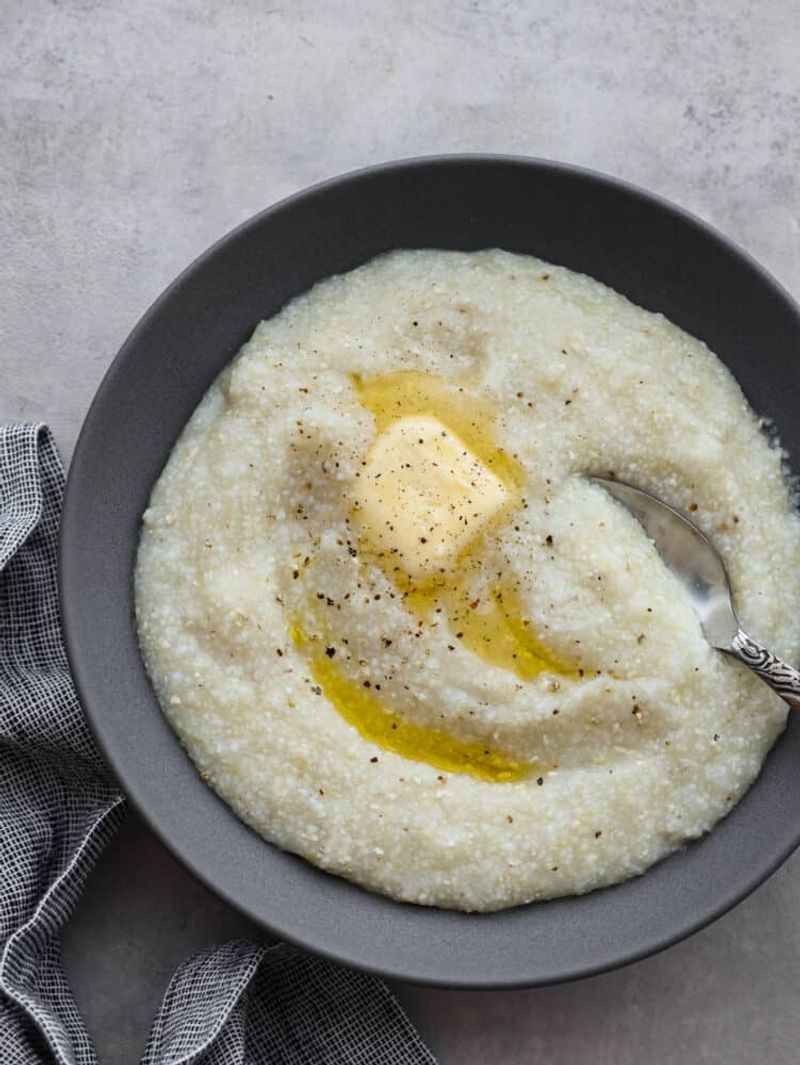

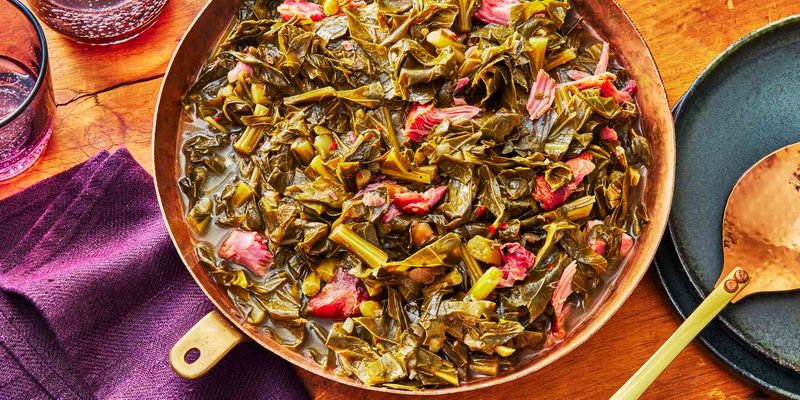
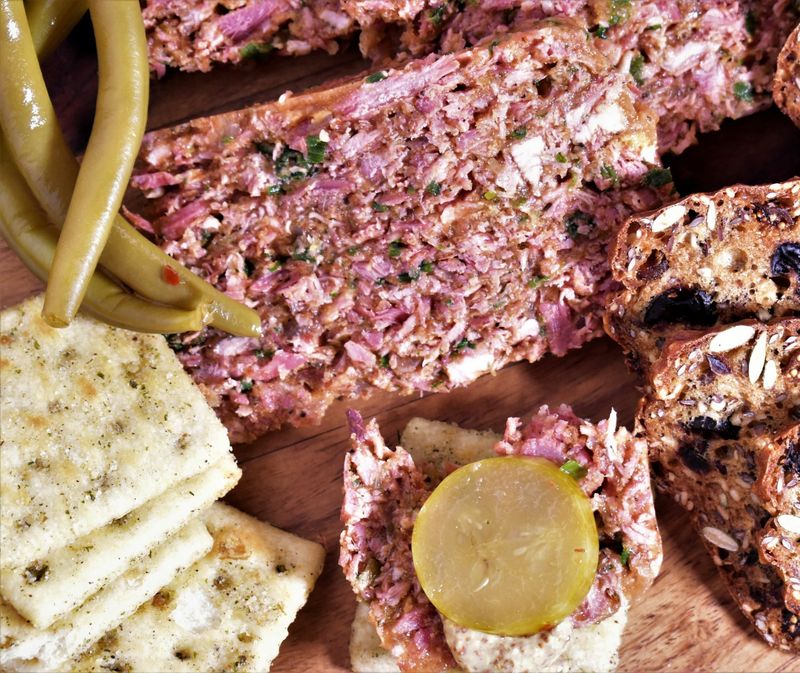


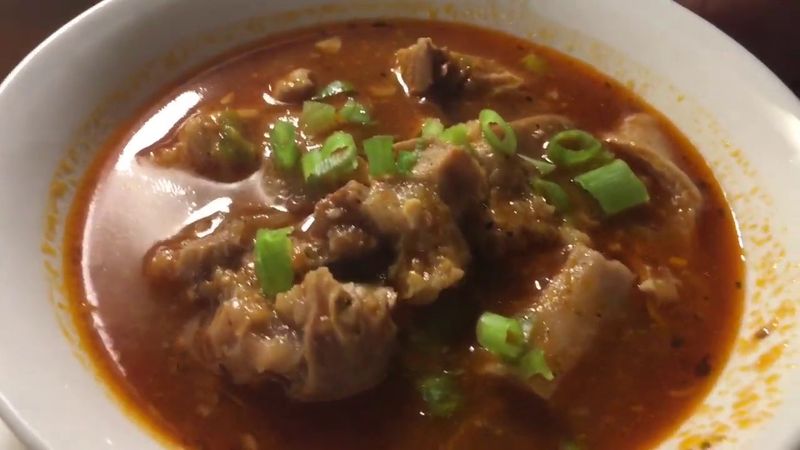
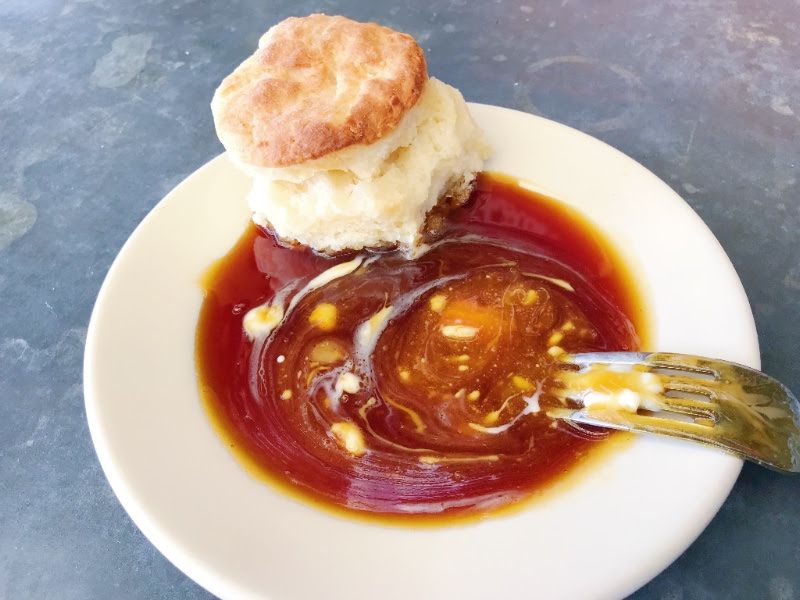
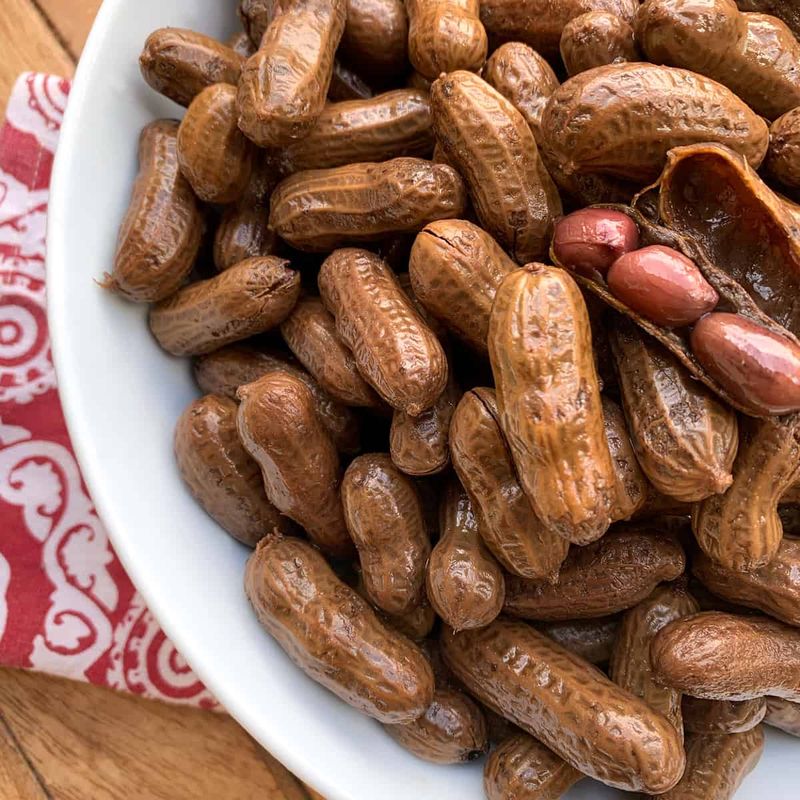
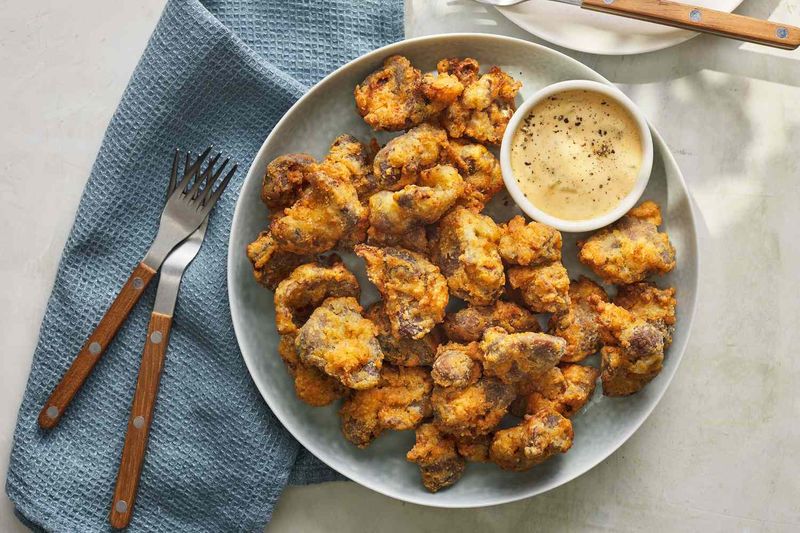
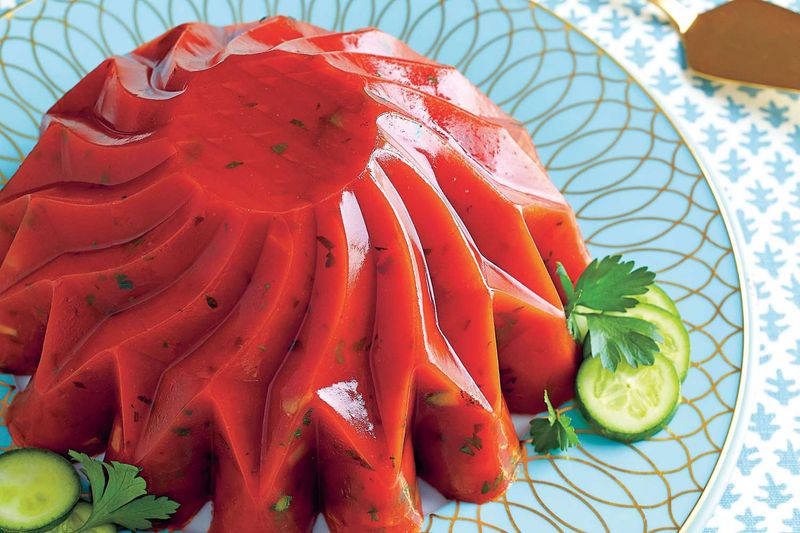
Leave a comment